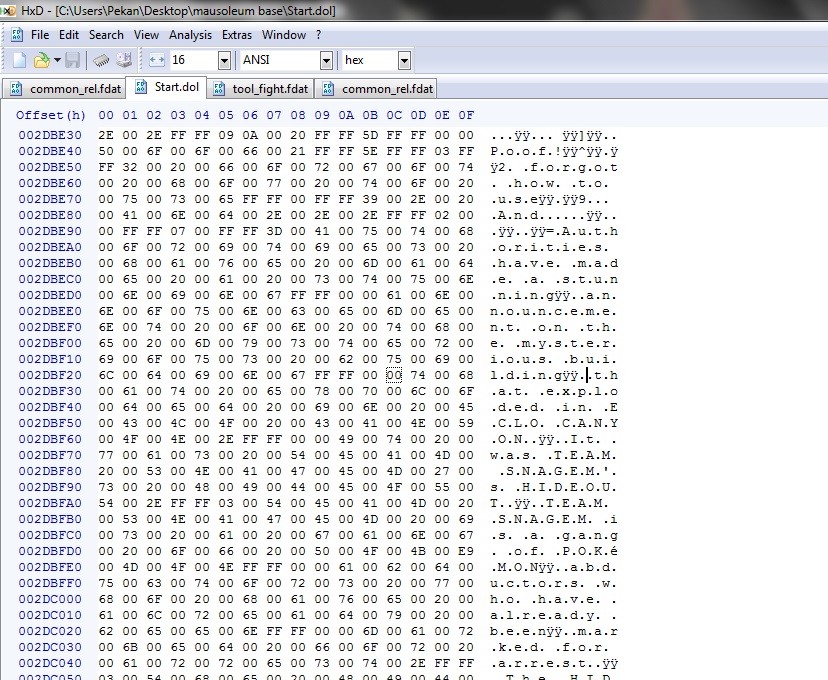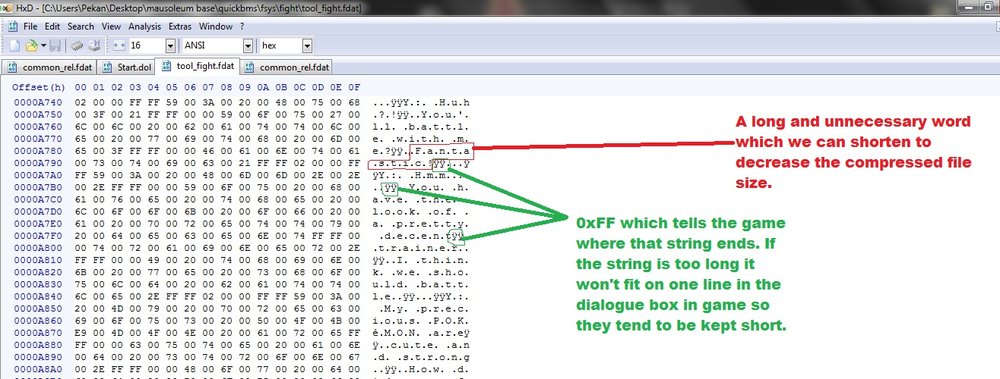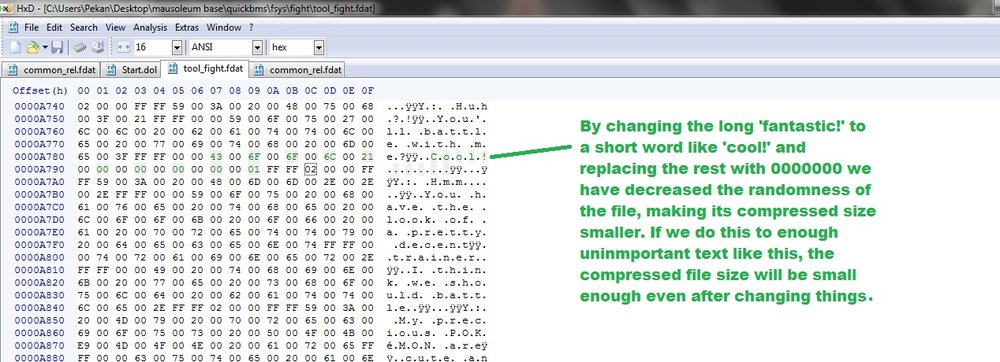** You will need to understand Part 1 of this tutorial before you can decompress the files used in any other parts**
Text editing is the easiest thing to do in just about any game that is being hacked. Text editing in colo/xd is also very easy to do but can be very tedious as the text in the game is scattered between many different files. This means that you have to first figure out which file has the text you want, then you may have to unarchive the file if it's in a .fsys file (most of the text is in .fsys files) and if it is in one then you must be careful not to increase the compressed file size for when you recompress it. However, if it isn't in a .fsys file then you can safely write over it without trouble.
All the text in-game is in Unicode which takes up 2 bytes per character. so for example the character 'A' is 0x0041. To change this to 'B' you just need to change the second byte from 0x42 to 0x41 and you can ignore the 0x00 between each letter.
The easiest place to start is in Start.dol in the "&&SystemData" folder of the ISO file system. This file doesn't get compressed so you can edit the text as much as you like without it increasing the file size, assuming you replace bytes rather than insert new bytes. The dol is really large and most of it isn't text so the text may be hard to find. Try using your hex editor to search for common words.

common_rel.fdat in common.fsys also contains a lot of interesting text like the names of all the pokemon and moves.
The text is always in a file I call a "string table". It stores each piece of text with an id number. That id number can be used elsewhere in the game to reference that piece of text. I will refer to this later when editing moves and pokemon.
You can recognise the start of the string table file because it has the acronym for the language the table is in. My games are the US version so the string tables all start with "US" (0x5553). You can search for this in a file to see if it contains an embedded string table, although it's usually obvious by the presence of unicode text. The table begins with pairs of values. The first 4 bytes is the id I mentioned previously and the second 4bytes is a pointer to the offset from the start of the string table (6bytes before US) to the string referenced by that id.
They exist in so many files that I can't list them all but here are some of the important ones.
Start.dol has a string table at 0x2CC810 (Colosseum), 0x374FC0 (XD) .

common_rel has some string tables, the first one being at 0x59890 (Colosseum), 0x0x4E274 (XD) and the next following consecutively.
A few files in fight_common are string tables.
The third file in any .fsys containing a map is a string table. This will containing all the NPC dialogue for that map.
When changing the text, make sure you only write over one string at a time. You can usually spot the end of a string because it is terminated by 0x00 or 0xFF. Writing passed this will overwrite the next string and mess up the pointers. So either repoint or try to fit you text in the same amount of space.
In order to keep the compressed file size small, try to find some other strings which are less important and shorten them. For example, changing the description for the inner focus ability from "prevents flinching" to something like "stops flinches" will decrease the randomness. Also in XD it seems that all the text translations for other languages were included in the US version which is the one I happen to have been hacking. You can probably safely erase all of the text in those files by replacing each character with 0x00 since you'll probably only ever play in one language. I haven't done this myself but I doubt it would cause issues.
Part 3:
Edited by evandixon
Update formatting



Recommended Comments
Create an account or sign in to comment
You need to be a member in order to leave a comment
Create an account
Sign up for a new account in our community. It's easy!
Register a new accountSign in
Already have an account? Sign in here.
Sign In Now